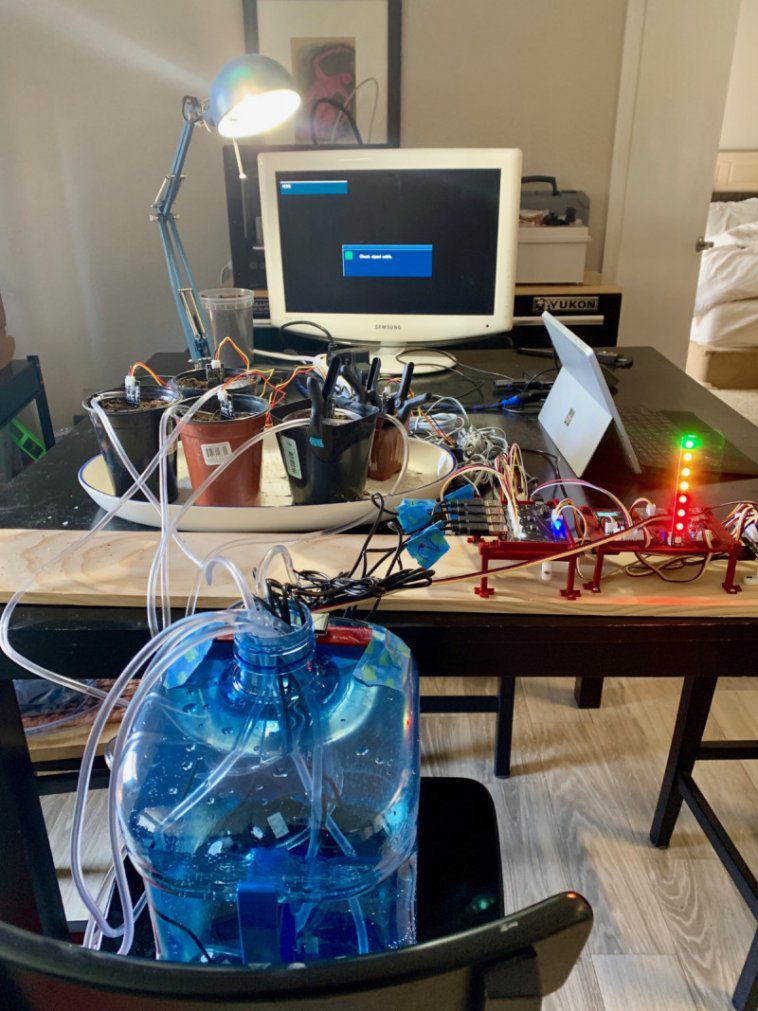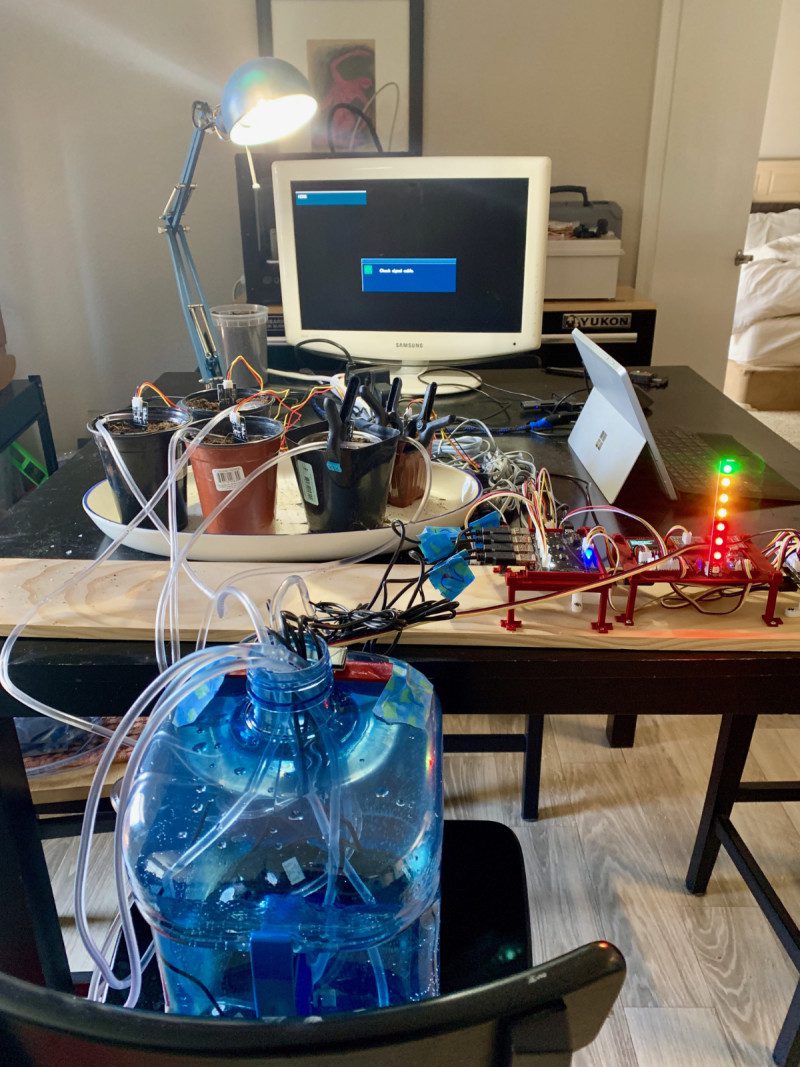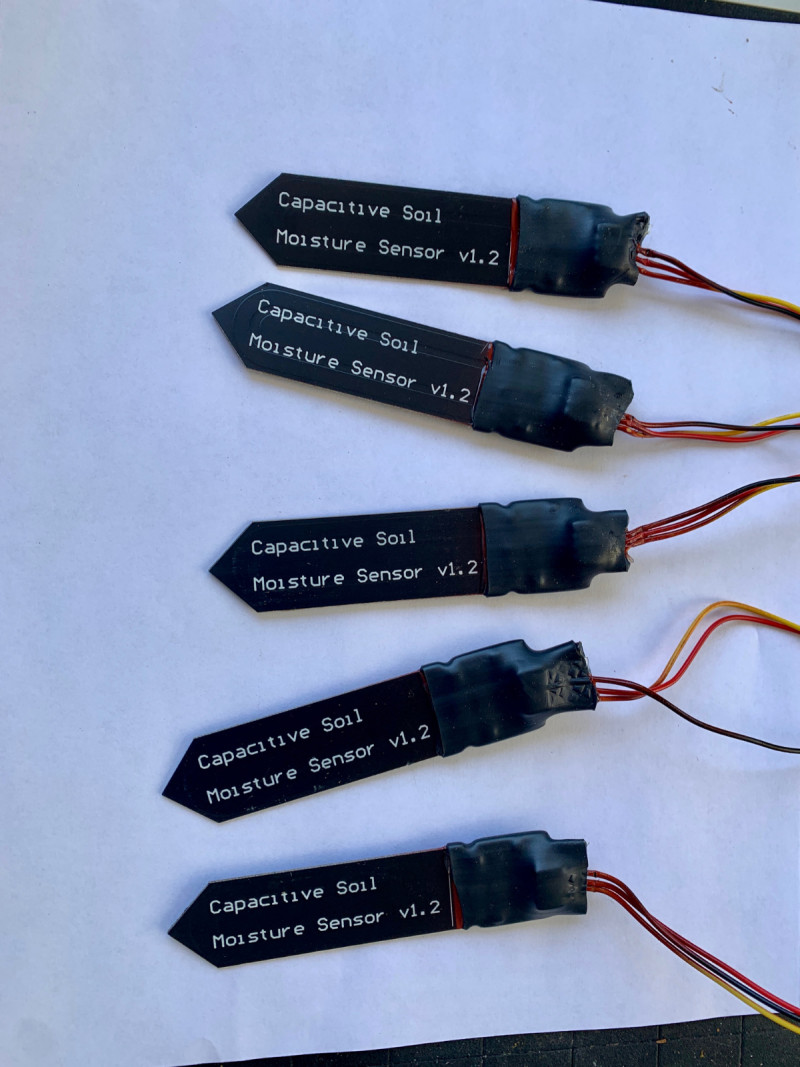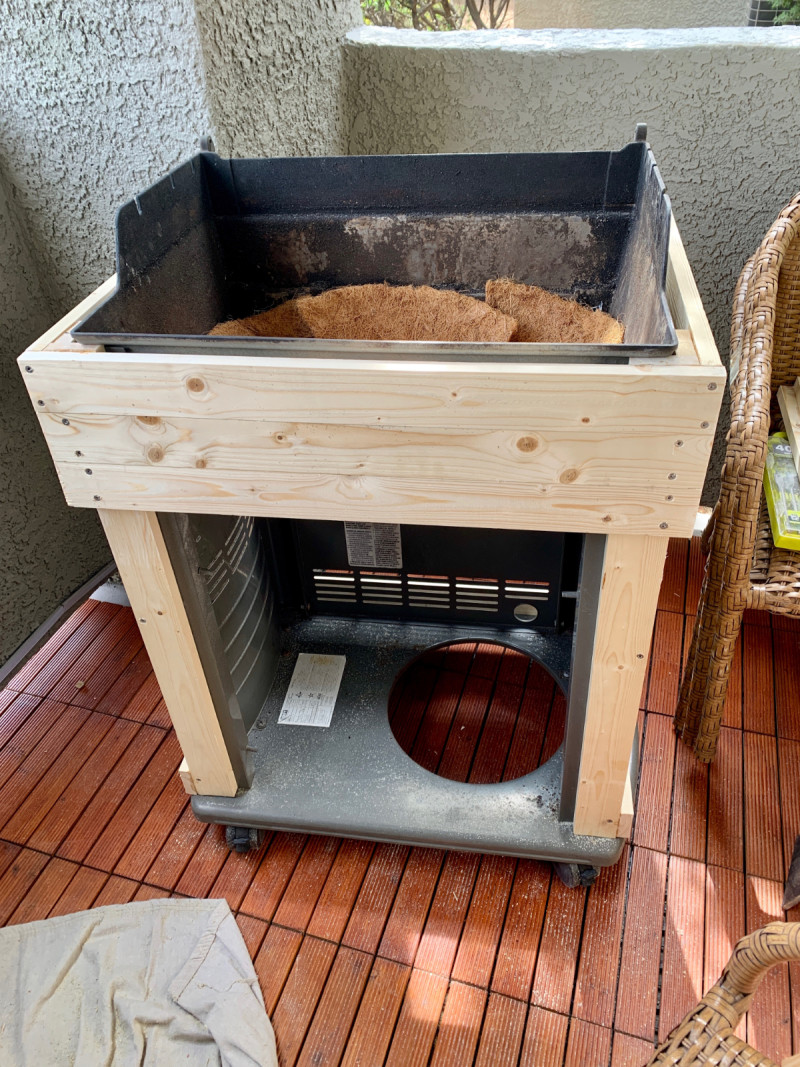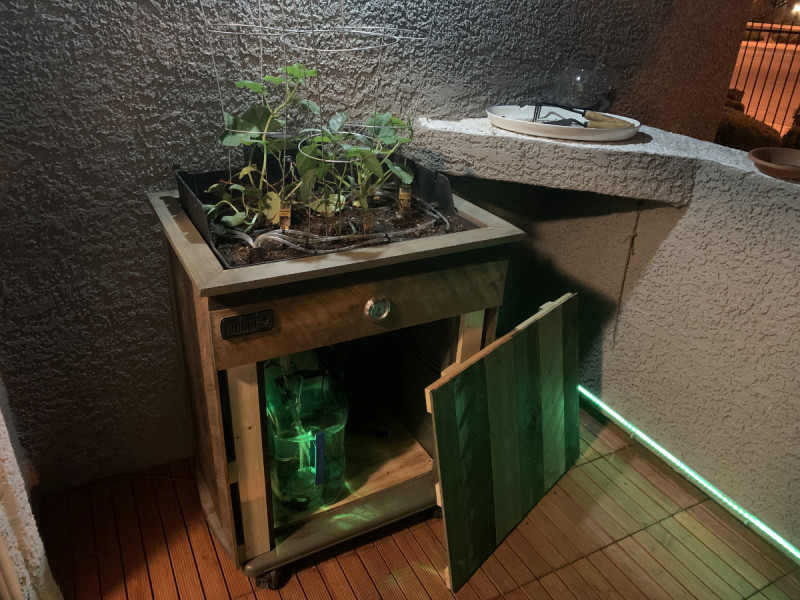“The convergence of the two ideas was what motivated me to build it,”
he explains. “I also liked the ‘Americana’ influence captured by the use of the Weber grill.
Weber is an icon of the American backyard BBQ culture; I like that it can continue to serve
up food for us humans to enjoy.“
Horticultural haven
Armed with his elderly BBQ and a Raspberry Pi-based Smart Garden System Kit (SGS v1)
from SwitchDoc Labs, Etienne set to work to inject new life into the old grill. He needed to
make modifications to both the Smart Garden System Kit and the BBQ – for example, the
Smart Garden Kit was designed for indoor use, so Etienne needed to ‘weatherise’ it, and
the BBQ had to be transformed into a planter box with an adequate drainage system,
which required some carpentry and plumbing skills to be called into action. This didn’t hold
Etienne back, however: “I found a tutorial video on building planter boxes and applied
some of the knowledge that I learned watching it. I have built significantly more complex
carpentry projects than this one in the past.”
Once his planter was ready to propagate, the technical side came into play. “The Smart
Garden works essentially in an ‘event-based’ model,” he says. “It uses a module in Python
called APScheduler to create recurring events. For example, it will ‘check’ the soil moisture
sensor level every 15 minutes. If the return of this ‘check’ is below a predetermined
moisture threshold, then an ‘alarm’ is created to water the plant.” The tank capacity is also
monitored by an ultrasonic sensor which again triggers an alarm when the water level gets
too low. However, the other sensors – including air quality, sunlight, and temperature – are
for information purposes only, so no alarms are required.
Etienne did some tweaking to the Python code to fit his specific needs in the extreme Las
Vegas environment – for example, he changed the soil moisture check to every five
minutes instead of 15, so that plants wouldn’t have to wait too long to be watered, and he
changed the length of watering time so that they got enough water. He also tells us that he
“used a longer ‘dumb’ moisture sensor to measure deeper into the soil than the moisture
sensors of the Smart Garden can reach. The soil moisture at seven inches deep was not
high enough.”
Feeling hot, hot, hot…
So, what’s Etienne growing and how are the plants faring? Having originally planted
tomatoes and peppers a little too late, he soon found that the Las Vegas summer desert
temperatures proved too much for his young vegetables and they succumbed to the
extreme heat (up to 46°C!)
That said, he’s now feeling more confident: “Now that the heat
of the summer is passed, I have planted again for the fall season. I am growing mini yellow
squash, mini cucumbers, and a poblano pepper plant. I am not late planting this time
around so I am optimistic that the result will be good.”
Feedback from family and friends has been very positive, and it has educational benefits
too. “They also appreciate that I do these projects, not only because I enjoy them, but to
expose my son to STEAM educational opportunities,” explains Etienne. “I can clearly see
the evolution of his questions over time, reflecting his increasing understanding.” He adds,
“A mixed vegetable grilled antipasto is delicious eating for a BBQ; this Weber won’t be
cooking it, but it might provide some of the ingredients!” It’s an excellent and pleasurable project where you should (extreme temperatures
permitting!) have something to show for your labours at the end – why not try it
yourselves?

